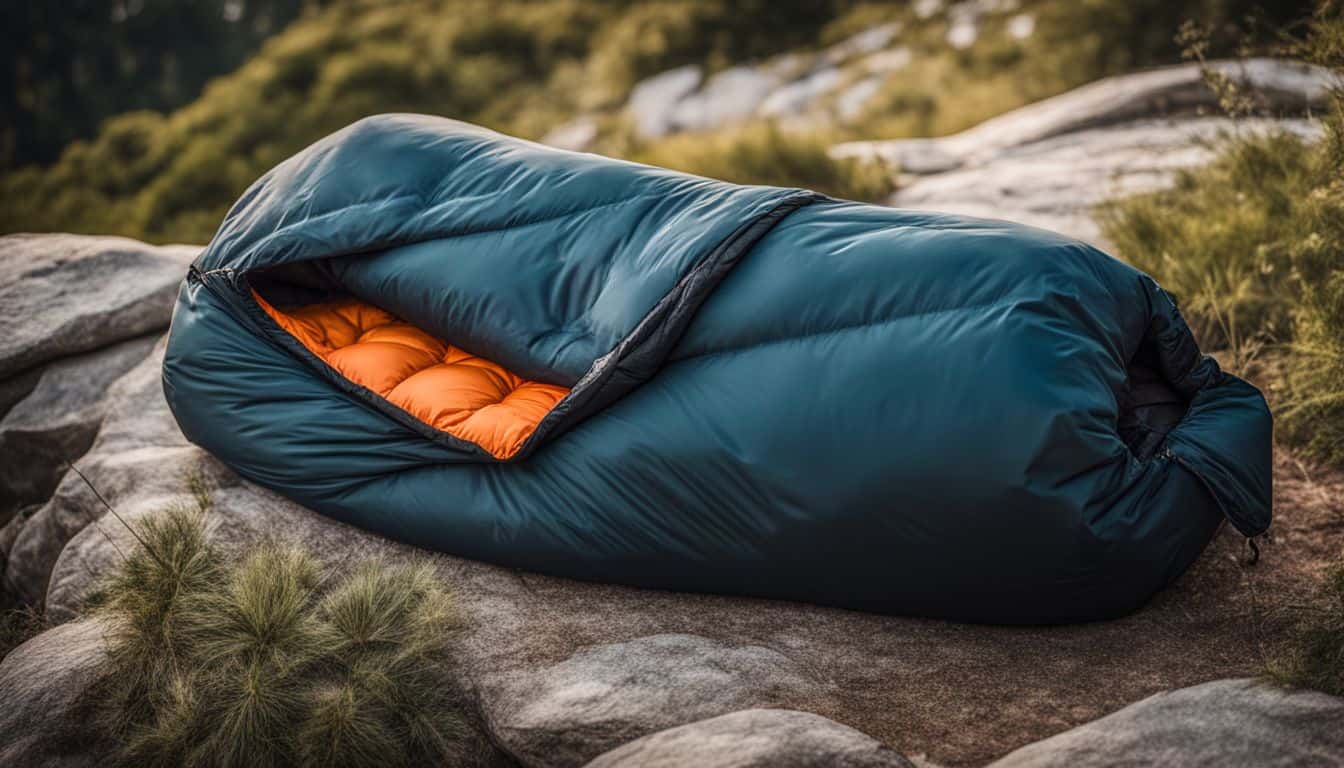A well-maintained sleeping bag is essential for comfortable and safe camping experiences. Whether you’re choosing the perfect sleeping bag for every season or selecting a sleeping pad for cold weather camping, proper care ensures your gear lasts longer and performs better.
This guide will walk you through the best practices for caring for and maintaining your sleeping bag.
Everyday Care and Prevention

During Use:
- Sleep in clean clothes to prevent dirt and oils from transferring to your bag. This includes wearing clean socks and avoiding applying lotions or creams before bed.
- Use a sleeping bag liner for added protection and easier cleaning. Liners are much easier to wash and can significantly extend the time between full sleeping bag cleanings.
- Air out your bag daily during trips to prevent moisture buildup. Hang it inside out in a shaded area for at least 15 minutes each day, longer if possible.
After Each Trip:
- Properly air and dry your bag before storage. Hang it in a well-ventilated area for at least 24 hours, or until completely dry to the touch.
- Spot clean minor dirt to prevent stains from setting. Use a soft brush or damp cloth with mild soap to gently clean affected areas.
Cleaning Your Sleeping Bag
When to Clean:
- Clean your bag when it shows visible dirt or loses loft. Loss of loft is often a sign that oils and dirt have accumulated, reducing insulation effectiveness.
- Typically, cleaning once or twice a year is sufficient for regular use. However, frequency may increase with more intensive use or harsh conditions.
Washing Methods:
- Hand Washing:
- Fill a bathtub with lukewarm water and gentle detergent. Use specialized down soap for down bags.
- Gently agitate the bag and rinse thoroughly. Avoid twisting or wringing the bag, which can damage the insulation.
- Machine Washing:
- Use a front-loading machine to prevent damage. Top-loading machines with agitators can tear or stress the fabric and insulation.
- Choose a gentle cycle with cold water. Add an extra rinse cycle to ensure all soap is removed.
Drying Techniques:
- Air drying is preferable but can take a long time. Hang the bag in a well-ventilated area, out of direct sunlight.
- If using a dryer, use low heat and dryer balls to break up clumps. Check and redistribute the insulation every 20-30 minutes.
Long-Term Storage
- Store your bag loosely in a large, breathable storage sack. This allows the insulation to maintain its loft and prevents moisture buildup.
- Avoid compression during long-term storage to maintain loft. Compressed insulation can lose its ability to trap air effectively over time.
- Keep in a cool, dry place away from direct sunlight. Sunlight can degrade the fabric and insulation over time, while moisture can lead to mold and mildew growth.
Specialized Care for Different Fill Types
Down Sleeping Bags:
- Require special care to maintain loft. Down clusters can clump together when wet, reducing insulation efficiency.
- Use down-specific detergents when washing to preserve the natural oils in the feathers. Regular detergents can strip these oils, reducing the down’s ability to loft and insulate.
- After washing, take extra care to ensure the down is completely dry. Use multiple drying cycles on low heat, adding clean tennis balls to help break up clumps and restore loft.
Synthetic Sleeping Bags:
- Generally more durable and easier to clean. Synthetic fibers are less sensitive to moisture and can maintain some insulating properties even when wet.
- May require more frequent washing due to reduced odor resistance. Synthetic materials tend to hold onto odors more than down.
- Dry synthetic bags on a low heat setting to prevent damage to the fibers. They typically dry faster than down bags.

Troubleshooting Common Issues
- For odors, air out the bag and use an odor eliminator spray. Persistent odors may require a full wash. For down bags, consider using a specialized down cleaner that helps restore the natural oils.
- To address loss of loft, wash and dry the bag properly. For down bags, use tennis balls or dryer balls during the drying process to break up clumps and restore loft. For synthetic bags, gentle agitation during washing can help separate fibers.
- Combat moisture and mildew with thorough drying and proper storage. If mildew has set in, clean the affected area with a mixture of water and white vinegar before washing the entire bag. Always ensure the bag is completely dry before storage.
Extending the Life of Your Sleeping Bag
- Use a ground cloth or sleeping pad to protect the bag from abrasion. This is especially important when camping on rough surfaces that could damage the bag’s outer shell.
- Transport your bag in a loose storage sack rather than a compression sack. Long-term compression can damage the insulation, particularly in down bags.
- Regularly inspect for wear and tear, repairing small issues promptly. Use appropriate patches for small holes or tears in the outer shell. For down bags, be cautious of down leakage and address any holes immediately to prevent further loss of insulation.
Conclusion
By following these guidelines, you’ll ensure your sleeping bag remains in top condition, providing warmth and comfort for many camping trips to come. Remember, a well-cared-for sleeping bag is an investment in your outdoor adventures.
Quick Tip: Understanding sleeping bag shapes can also help you choose the right bag for your needs and maintain it properly.

Leave a Reply